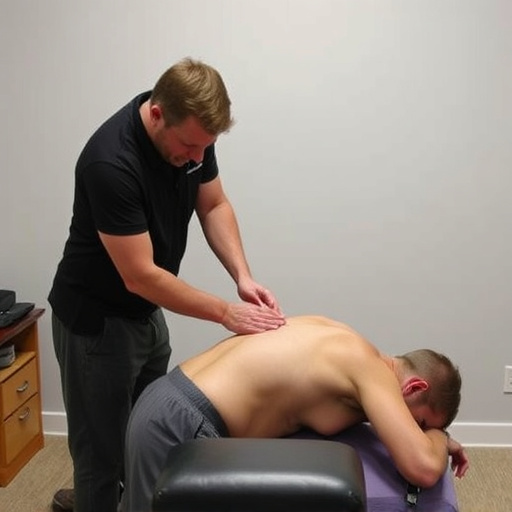The Occupational Workmen's Compensation (OWCP) supports workers injured on the job, offering medical coverage, wage compensation, and specialized occupational injury treatment rehabilitation. Accessing this treatment, crucial for functional recovery, faces challenges like insurance limitations, provider shortages, and long wait times. OSHA and OWCP initiatives tackle these issues with expanded networks, telemedicine, and simplified approval processes to enhance accessibility and efficiency of occupational injury treatment.
The Occupational Safety and Health Administration’s (OWCP) plays a pivotal role in ensuring workers access quality care after occupational injuries. This article delves into OWCP’s mission, exploring how it facilitates the intricate process of occupational injury treatment. We analyze challenges faced by injured workers navigating this system and propose potential improvements to enhance accessibility. Understanding these dynamics is crucial for promoting a safer, healthier workforce and improving overall satisfaction with occupational injury treatment.
- Understanding OWCP and Its Mission
- Navigating Occupational Injury Treatment Process
- Challenges and Improvements in Access
Understanding OWCP and Its Mission

Occupational Workmen’s Compensation (OWCP) is a governmental agency dedicated to providing support and ensuring access to quality care for workers who sustain injuries or develop illnesses related to their jobs. Its mission is to facilitate a smooth transition back to work for injured employees while promoting workplace safety. OWCP plays a pivotal role in managing claims, offering medical benefits, and coordinating occupational injury treatment.
The agency offers a comprehensive range of services, including medical coverage, wage-loss compensation, and rehabilitation programs. One key aspect is its focus on muscle recovery and providing access to specialized physical therapy services. These rehab services are tailored to meet the unique needs of each worker, helping them regain strength, mobility, and functionality after an occupational injury.
Navigating Occupational Injury Treatment Process

Navigating the complex landscape of occupational injury treatment can be a daunting task for many workers. The initial steps often involve reporting the injury to the appropriate authorities, which is crucial for accessing benefits and medical care. Following this, employees must engage with their employer or the designated insurance carrier to initiate the claims process, ensuring they receive the necessary support and information about their rights and options.
Understanding the available treatment avenues is essential. This may include access to occupational therapists who can provide specialized care, focusing on functional rehabilitation to restore mobility and independence. In cases of specific injuries like pinched nerves, targeted treatments can offer significant relief, improving overall quality of life. The process encourages a holistic approach, where medical professionals collaborate to design tailored injury rehabilitation plans, catering to the unique needs of each individual.
Challenges and Improvements in Access

Accessing appropriate occupational injury treatment has long presented several challenges. Workers often face barriers such as limited insurance coverage, lack of specialized healthcare providers in their areas, and lengthy waiting times for appointments. These issues can significantly delay necessary care, impacting recovery timelines and overall outcomes. The Occupational Safety and Health Administration (OSHA) and various workers’ compensation programs, like the OWCP, have been actively working to improve these accessibility issues.
Efforts towards enhancing access include expanding networks of approved healthcare providers, implementing telemedicine services for remote consultations, and streamlining approval processes for treatments such as spinal adjustments to provide faster sciatica relief and address lower back pain. These improvements aim to make occupational injury treatment more accessible and efficient, ensuring workers receive the care they need in a timely manner.
The Occupational Safety and Health Administration’s (OWCP) role in facilitating access to occupational injury treatment is invaluable. By streamlining the process, OWCP ensures that injured workers receive timely and comprehensive care. However, challenges persist, including lengthy claim durations and limited provider networks. Addressing these issues through policy reforms and technological advancements will further enhance accessibility to occupational injury treatment, fostering a safer and healthier workforce.














